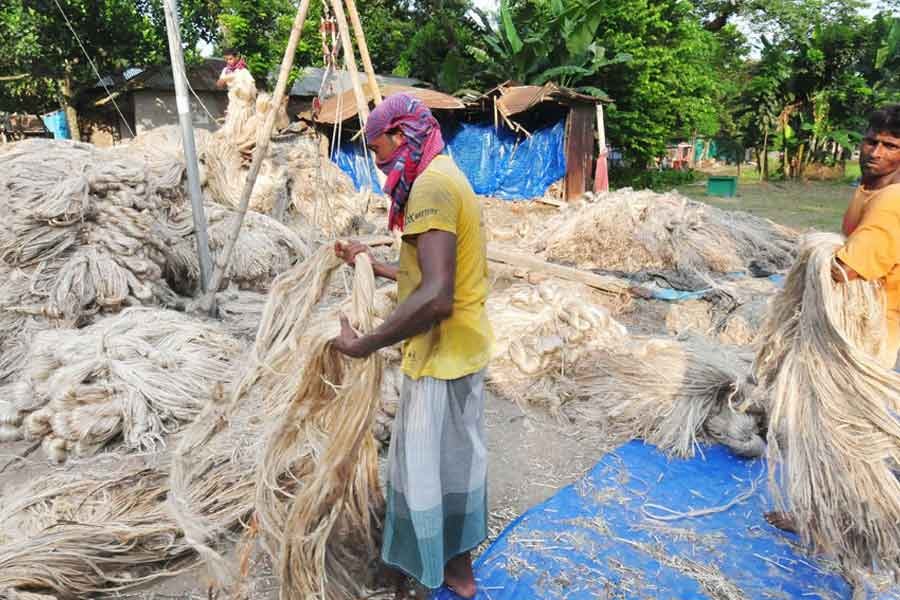News about jute cultivation is a mixed bag of joy and sorrow. While this cash crop, according to reports, is set to have a bumper yield, farmers in many areas are confronted with an unprecedented crisis of water for retting of jute plants. Particularly in the country's north where a drought-like situation is prevailing for want of rains and seasonal flooding of low lands during the monsoon, farmers are at a loss about how to ret their produce and maintain fibre quality. Some desperate farmers have reportedly taken lease of ponds used for fish farming at a very exorbitant cost. In areas where water is readily available for retting jute plants, farmers are counting good profit because of the price of jute at Tk 2,500-3,000 a maund (a little over 37 kilograms).
True, the golden fibre needs perfect retting to be considered the highest grade apart from its lush growth in favourable soil. In the past, there was no dearth of water in the jute-growing areas. The problem facing jute farmers today sets the alarm bell ringing. Climate change has already wreaked havoc on many natural resources people the world over once considered granted. Many rivers, including the Thames, Rhine and Danube, from America to Europe, to Asia and the Middle East are drying up. Farmers will have to plan cultivation of crops depending on the changing pattern of seasonal cycle. In this case, apps developed for weather forecasting in relation to agriculture can be highly useful. The conventional agriculture will certainly undergo radical transformation and the department of agriculture and its extension service will have to be on their toes to guide farmers for cultivation of different crops in order to avoid losses as much as possible.
So far as jute cultivation and retting are concerned, there has been a major shift in the process of the latter if not for the former. Here is a crop that needs little tending and no irrigation, so conventional cropping pattern is enough for its cultivation. But instead of plant retting, ribbon retting can bring about a huge difference. In conventional retting of jute plants, there is always a risk of over-retting or under-retting but in ribbon retting, a mixed bacterial retting culture, there is no such risk. Moreover, the time of retting can be reduced by 4-5 days. Half the water is required and small water reservoir can be enough for the purpose. Thus the environmental pollution caused by normal retting can also be avoided.
Evidently, jute cannot regain the preeminent position it once held in the country's economy but if there is a collective effort to boost the jute industry, it can be one of the top export earners even today. Positive developments such as the development of jute ribbon-separating machine by a country mechanic and also by the Mirpur Agriculture Workshop and Training School have to be encouraged for their wider use at the grassroots level. The production line of such machines have to be financed by the government in order to make the retting process easier. Ribbons thus separated may be retted with water pumped out from the underground.


